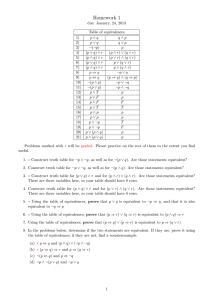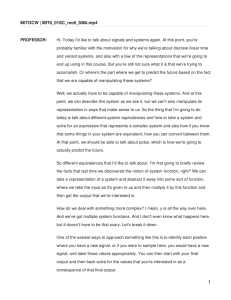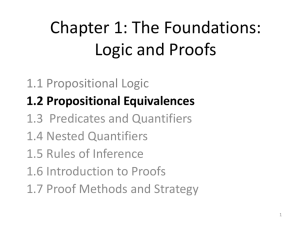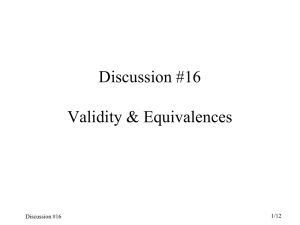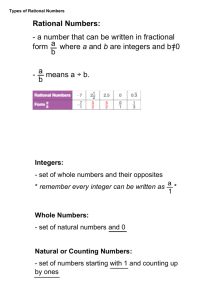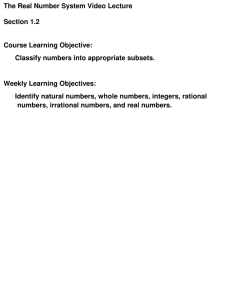1. Statements Determine which of the following are statements
advertisement
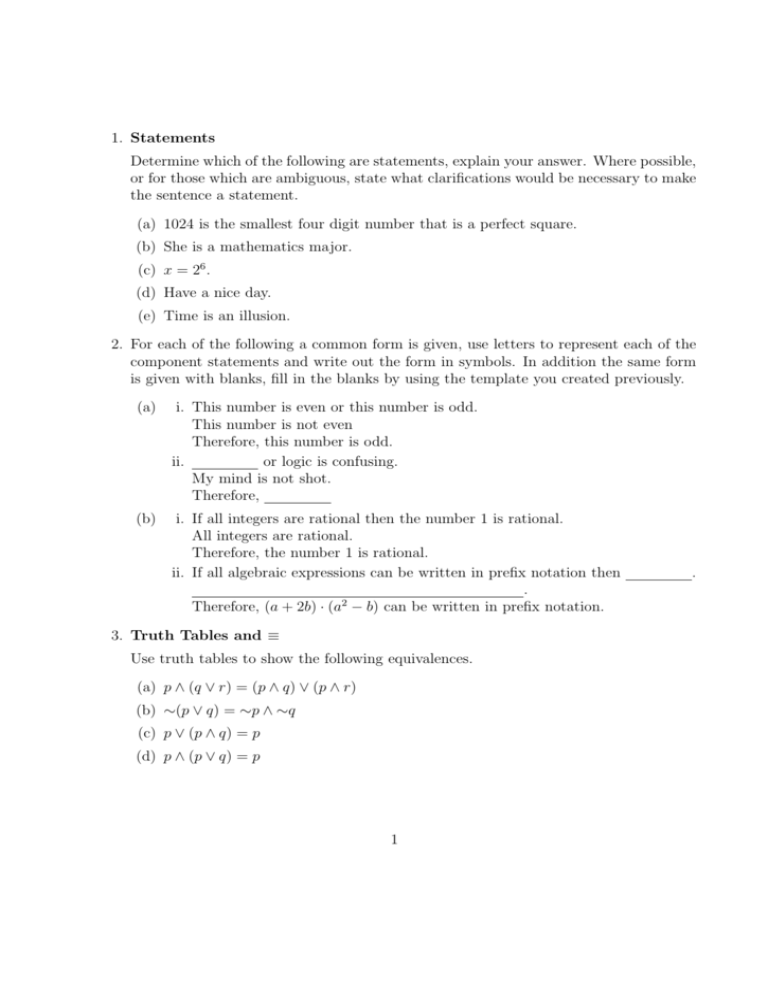
1. Statements Determine which of the following are statements, explain your answer. Where possible, or for those which are ambiguous, state what clarifications would be necessary to make the sentence a statement. (a) 1024 is the smallest four digit number that is a perfect square. (b) She is a mathematics major. (c) x = 26 . (d) Have a nice day. (e) Time is an illusion. 2. For each of the following a common form is given, use letters to represent each of the component statements and write out the form in symbols. In addition the same form is given with blanks, fill in the blanks by using the template you created previously. (a) i. This number is even or this number is odd. This number is not even Therefore, this number is odd. ii. or logic is confusing. My mind is not shot. Therefore, (b) i. If all integers are rational then the number 1 is rational. All integers are rational. Therefore, the number 1 is rational. ii. If all algebraic expressions can be written in prefix notation then . 2 Therefore, (a + 2b) · (a − b) can be written in prefix notation. 3. Truth Tables and ≡ Use truth tables to show the following equivalences. (a) p ∧ (q ∨ r) = (p ∧ q) ∨ (p ∧ r) (b) ∼(p ∨ q) = ∼p ∧ ∼q (c) p ∨ (p ∧ q) = p (d) p ∧ (p ∨ q) = p 1 . 4. Use truth tables to determine whether the following proposed equivalences are valid or not. (Note t is a column of T and c is a column of F .) (a) p ∨ t ≡ t (b) (p ∧ q) ∨ r ≡ p ∧ (q ∨ r) (c) ((∼p ∨ q) ∧ (p ∨ ∼r)) ∧ (∼p ∨ ∼q) ≡ ∼(p ∨ r) (d) (r ∨ p) ∧ ((∼r ∨ (p ∧ q)) ∧ (r ∨ q)) ≡ p ∧ q 5. Logical Equivalences Each step of the following deduction uses one of the rules from the logical equivalences given out in class. For each step state which rule is being used. (a) (p ∧ ∼q) ∨ (p ∧ q) ≡ ≡ ≡ ≡ p ∧ (∼q ∨ q) p ∧ (q ∨ ∼q) p∧t p (b) (p ∨ ∼q) ∧ (∼p ∧ ∼q) ≡ ≡ ≡ ≡ (∼q ∨ p) ∧ (∼q ∨ ∼p) ∼q ∨ (p ∧ ∼p) ∼q ∨ c ∼q 6. Use the logical equivalences (not a truth table) to verify the following equivalences. (a) (p ∧ ∼q) ∨ p ≡ p (b) ∼(p ∨ ∼q) ∨ (∼p ∧ ∼q) ≡ ∼p (c) ∼((∼p ∧ q) ∨ (∼p ∧ ∼q)) ∨ (p ∧ q) ≡ p 2 7. Valid Forms Use truth tables to decide wether the following argument forms are valid or not. Be sure to clearly indicate all premises, conclusions and critical rows and how you arrived at your answer. p∨q p ⇒ ∼q c) p⇒r ∴r p⇒q a) q ⇒ p ∴p∨q p p⇒q b) ∼q ∨ r ∴r p⇒q d) p ⇒ r ∴ p ⇒ (q ∧ r) (p ∧ ∼q) ⇒ r p∨q e) q⇒p ∴r 8. Consider the following set of premises and conclusion. Use standard argument forms to deduce the conclusion from the premises, giving a reason for each step. 1) 2) 3) 4) 5) ∴ ∼p ⇒ r ∧ ∼s q⇒s u ⇒∼p ∼w u∨w ∼q ∨ w 3
